Keeping bees is a complex endeavor that involves developing a relationship with a society of beings completely different from humans. As living beings, bees of different species have different traits. Their production, habits and temperament vary from one type to another. Their needs also vary. Read on to learn more on how to start beekeeping.
What You'll Learn Today
- Get To Know Bees
- Bee Society Is Tightly Structured
- Honeybees Convert Pollen Into Food And Honey
- Beekeeping Is A Thoughtful Process
- Gather Information And Set Goals First
- Avoid Pain: Educate Yourself About Bees!
- Good Beekeeping Requires Teamwork And Diplomacy
- Setting Firm Beekeeping Goals Saves You Money And Headaches
- Be Sure To Put Your Hive In The Right Place
- Choose The Best Bees For Your Goals And Location
- Local Bees Adjust More Quickly
- Frequently Asked Questions
- Q: What should you do first if you want to keep bees?
- Q: What kind of equipment do you need for beekeeping?
- Q: Why is having a smoker beneficial for a beekeeper?
- Q: Once I’ve gotten all my equipment, should I get my bees?
- Q: What’s the best way to get bees to start a new hive?
- Q: How do I introduce the bees to their new hive?
- Q: Should you do anything special to feed new bees?
- Q: How often do you need to check on a new hive?
- Study Up And Give Your Bees Plenty Of Time To Settle In
Get To Know Bees
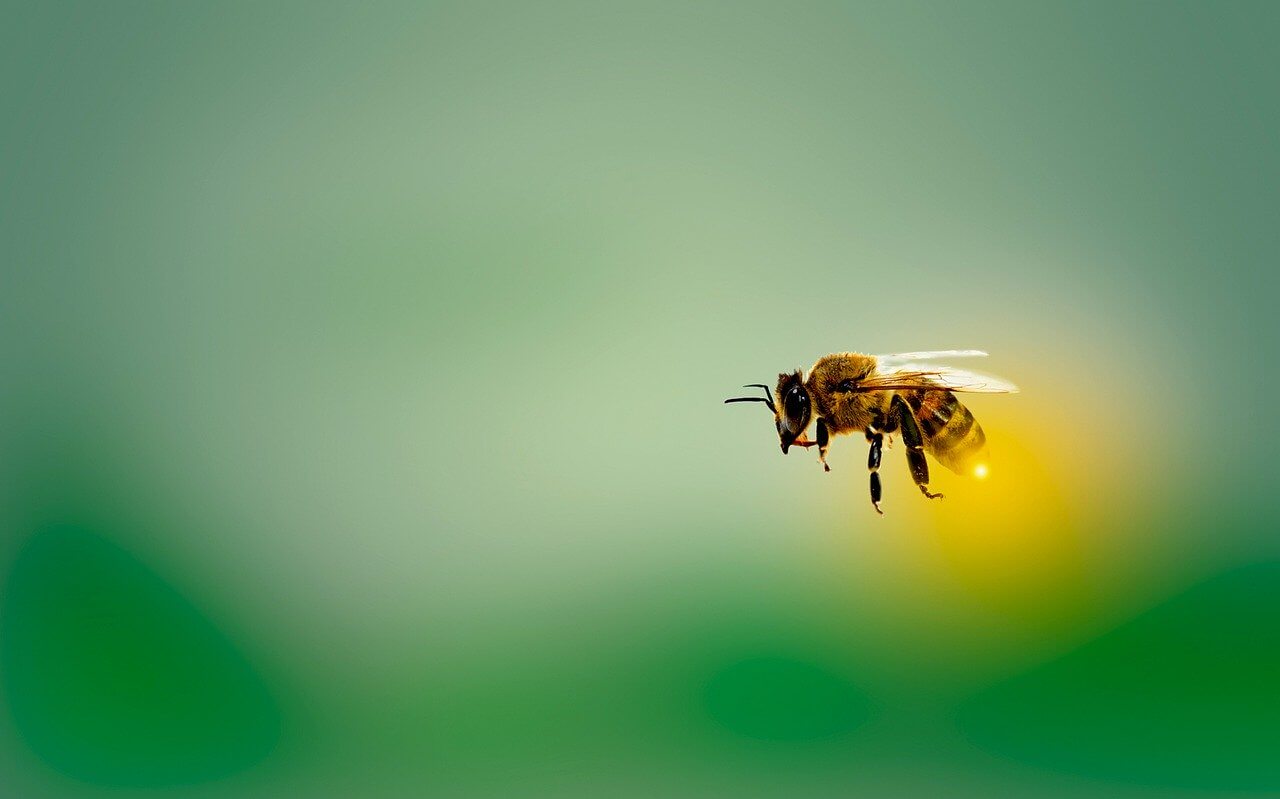
Success at beekeeping means your bees are happy and productive and you don’t get stung much. To meet with this success, it’s important that you begin by learning as much as you possibly can about bees.
European honeybees (Apis mellifera) are most commonly kept for honey. In the United States, they are the only species kept for this purpose; however, there are over four-thousand species of bees in North America. These include solitary ground and tunnel nesting bees and various types of social bumblebees.
All types of bees are valuable as natural pollinators, but honeybees are the only type of insect that stores excess amounts of food for use in lean times.
That is why they are so valuable and it is the reason they were introduced to the Americas by Europeans in the 17th Century.
Bee Society Is Tightly Structured
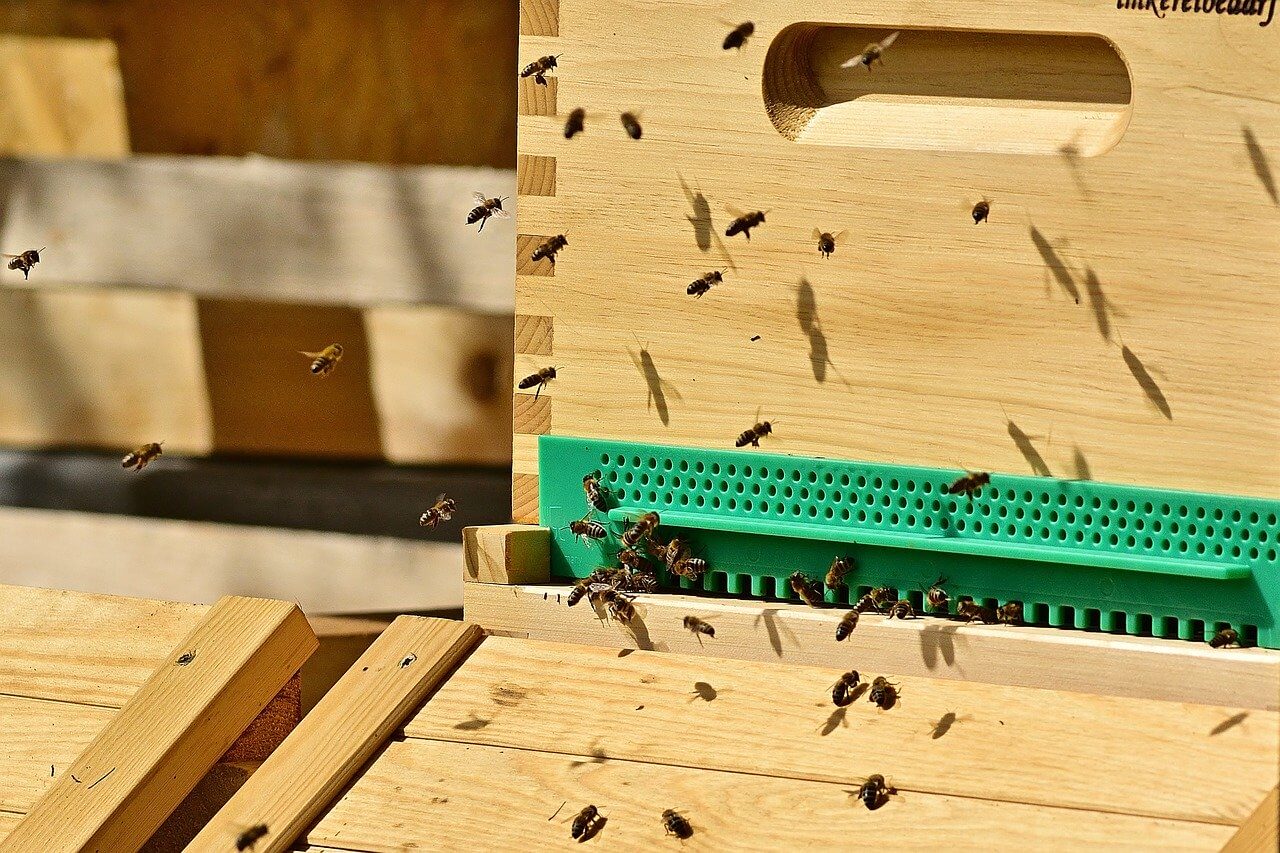
Honeybee colonies follow a natural caste structure. There are three castes of bees, and each caste has a set and specific role in bee society. Every colony contains:
1. One queen bee
The queen is the only bee that reproduces. She stays in the hive except for her virgin flight, during which she travels to a drone congregation area for the purpose of mating with as many as eighty drones before going back to the hive.
The sperm collected will fertilize all of the eggs the queen produces in her five or six year lifespan. Interestingly, the queen is able to determine whether the eggs she lays will become workers or drones.
On rare occasions, an experienced queen may leave the hive as the center of a swarm in search of a new hive. This happens when the hive becomes overcrowded.
2. Thousands of worker bees
These are sterile female bees who are responsible for all of the work in the hive. They forage, feed young, produce honey and wax for storage, clean and defend the hive. A worker bee lives for about six weeks during the honey producing season.
3. Hundreds of drone bees
These are male bees who do nothing but mate with virgin queens in other colonies. This serves to spread their colony’s genetics.
After mating, drones die. Those drones that do not mate hang around the hive consuming resources only to be kicked out by the workers before winter arrives.
All Bees Are Essential
Bees of all types pollinate about ninety percent of non food bearing plants worldwide and about thirty percent of crops. As bees forage for pollen, they become covered in the stuff.
They groom it into pouches on their legs to carry back to the hive, but some remains on the bees‘ bodies.
This is the pollen that is spread from plant to plant to complete necessary pollination. Ultimately, all living things rely on bees for the food we all need to survive.
Honeybees Convert Pollen Into Food And Honey
The pollen that honeybees carry back to the hive is filled with carbohydrates. When bees consume this, it mixes with enzymes in the bees’ honey gut and is stored and dehydrated to become honey.
Bees also use pollen to make a substance known as “bee bread”. This amino acid and protein rich mixture is used to feed the queen and the bee larvae.
Beekeeping Is A Thoughtful Process
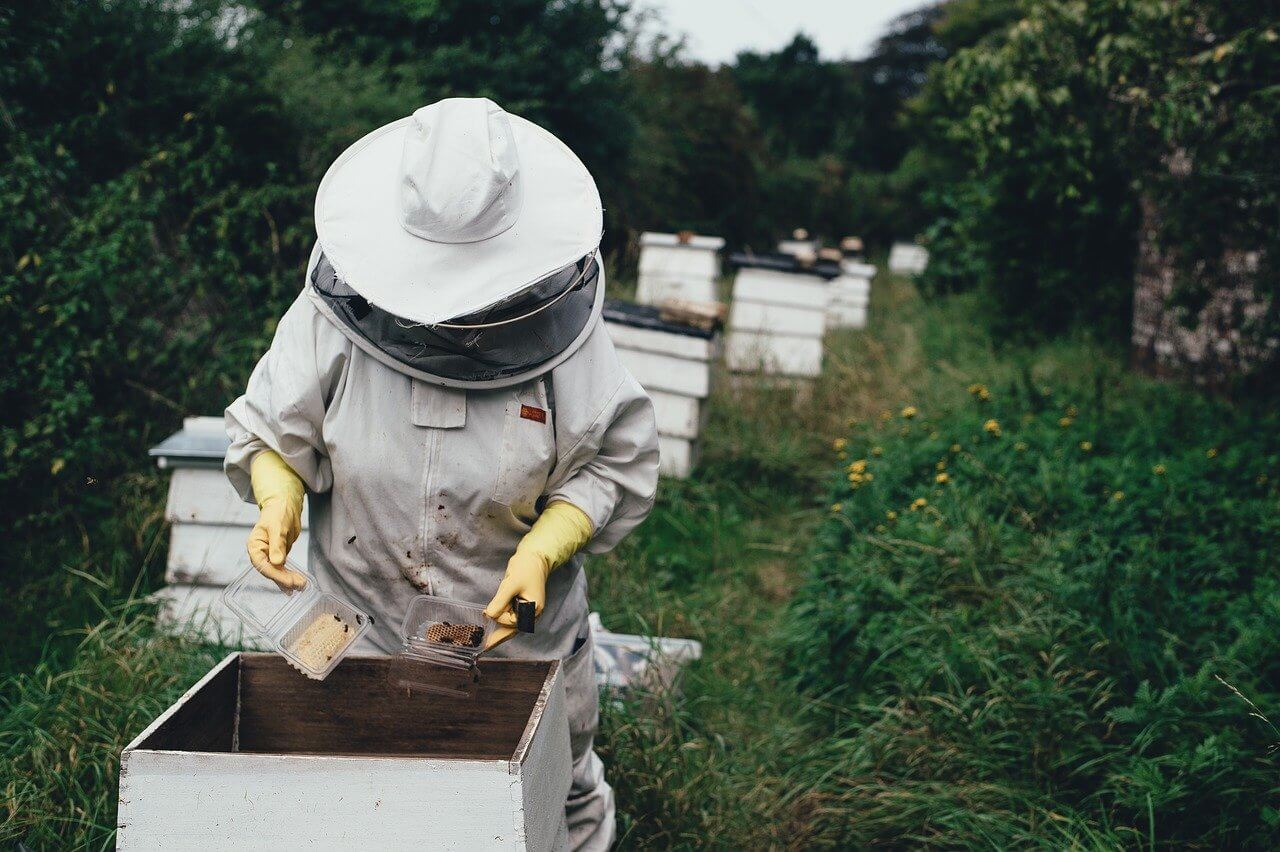
While there is less backbreaking labor involved in beekeeping than in caring for most other types of farm animals, there is quite a bit more thinking and careful effort.
No matter what type of bees you acquire or where you live, there are certain tasks you must attend to faithfully.
During the honey season (all the warm months in your area) you must inspect your hives regularly to be sure that your bees have room for expansion and that your queen is reliably laying eggs.
You must also check to be sure that the workers are setting aside enough honey to see the colony through the winter. If not, you must make plans for feeding them through the cold, winter months.
During the winter, your bees will eat their saved honey, as well as any additional food you may give them (e.g. sugar boards).
When temperatures rise above freezing, they will go outside for waste elimination because bees do not soil their living quarters.
On these relatively warm days, you should inspect the hives to make sure all is well without releasing too much heat from inside the hives.
Gather Information And Set Goals First
If you are just beginning to think about keeping bees, looking at online information is a good idea. Another good source of general beekeeping information is the book, Beekeeping for Dummies.
Just keep in mind, you should take it all with a grain of salt because your own hive, on your own property, with your own bees under your care will be different from anyone else’s.
It’s a good idea to start out with broad, general knowledge. Refine that knowledge with information from local beekeepers and then hone in on the specifics through your own, first hand observations and experience.
Get in touch with your county extension office to get professional advice about beekeeping in your area. Your county agent can also direct you to local beekeeping associations and clubs. These are an excellent resource.
Experienced local beekeepers can give you first hand tips and advice about potential problems such as challenging weather, scarcity of nectar and local pests and diseases.
Avoid Pain: Educate Yourself About Bees!
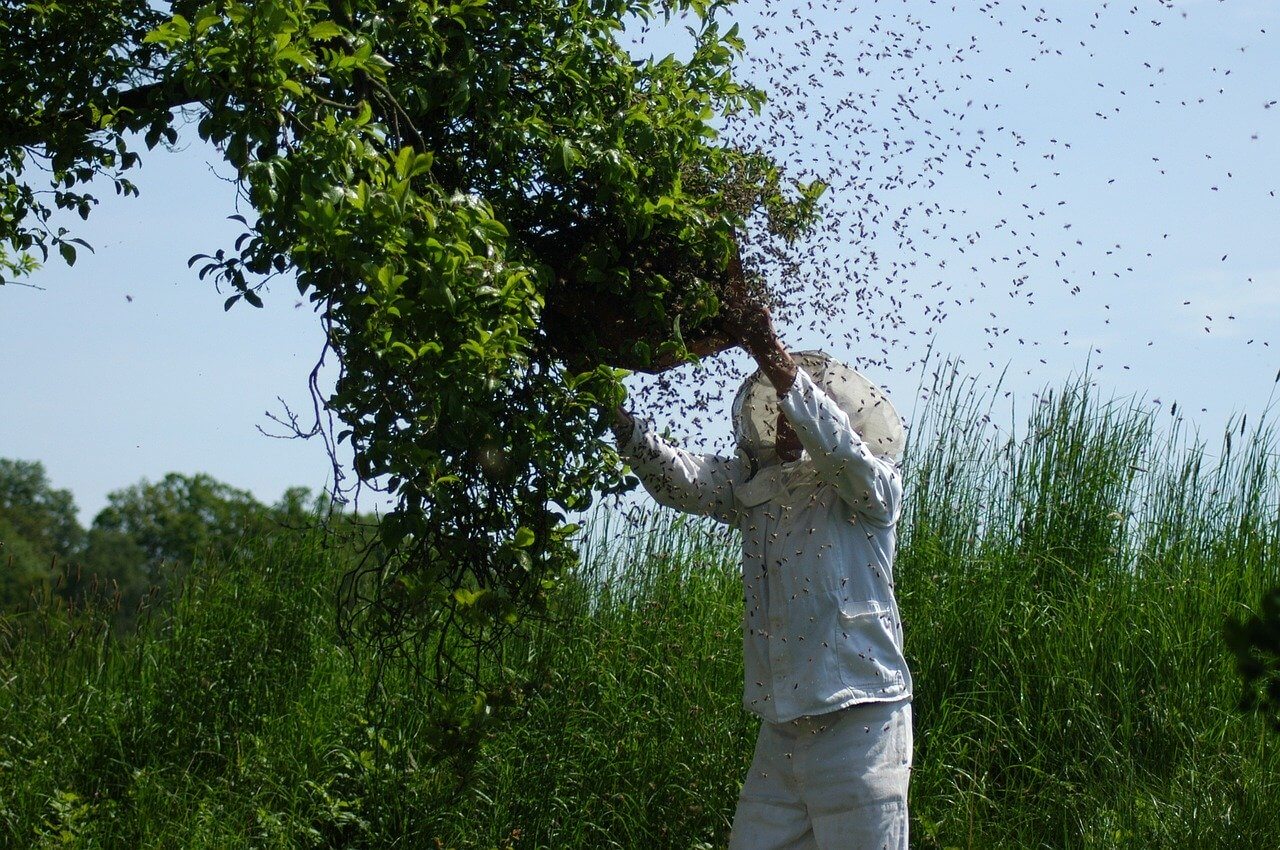
Caring for bees takes knowledge, time and consistent care. Beekeeping can be said to be a passion, and excellent beekeepers know that they must be devoted to learning and be ready to put up with the occasional bee sting.
Understanding bee psychology and wearing proper beekeeping gear goes a long way toward minimizing stings.
For example, it’s important to know that bees are most active and aggressive during the warmest times of day and year.
In areas with extreme heat, they may tend to be more active in the cooler time of day. For this reason, your climate really determines when your bees will be the most active and perhaps most aggressive.
Most honeybees are quite docile, and they don’t want to sting you because when they do, they will lose their stinger and die. Even so, you will be stung from time to time.
Good Beekeeping Requires Teamwork And Diplomacy
Good beekeeping is not a solitary endeavor. Seeking the opinions of experienced beekeepers and then accepting or processing those opinions with diplomacy is a big part of successful beekeeping.
In recent years, the goals of beekeepers have diverged. Some people keep bees just for the sake of the bees. Some keep them just for the honey.
Some value the natural pollination. Some have all of these goals in mind. Tempers have been known to flare at bee club meetings!
You’ll need to consider whether you want to pursue natural beekeeping or use chemicals to deal with problems such as mites and bacterial and viral infections.
If you want to go natural, you’ll need to choose your bees carefully. It takes a strong, robust (and sometimes aggressive) species of bees to do well with natural management.
Read also: How To Care For A Cow: A Simple Guide
Setting Firm Beekeeping Goals Saves You Money And Headaches
Your goals will determine your beekeeping style and will affect every decision you make. It’s wise to decide exactly what you want to accomplish with beekeeping before you purchase any bees or acquire any equipment. It can be expensive to get started with beekeeping.
Here are the expenses you will have right off the bat:
- Equipment: Hive, boxes, frames, covers, etc.
- Bees: Queen and colony purchased from a reliable supplier.
- Beekeeper’s Suit: You should invest in a full suit, not just headgear.
- Tools: You’ll need a hive tool, and uncapping knife, a bee brush, a smoker and leather gloves.
All of these things can cost you hundreds of dollars, and this list is just the bare minimum. As you become more experienced, you will naturally want to upgrade some of your equipment and add more extensive items.
Additionally, like plant care and fish keeping, beekeeping tends to be a growing occupation. You should really start out with two hives, but more is better, and the more you get, the more you‘ll want!
Once you have done your homework and made connections with your local agricultural extension and beekeeping association, you’ll be ready to begin making some important decisions.
Be Sure To Put Your Hive In The Right Place
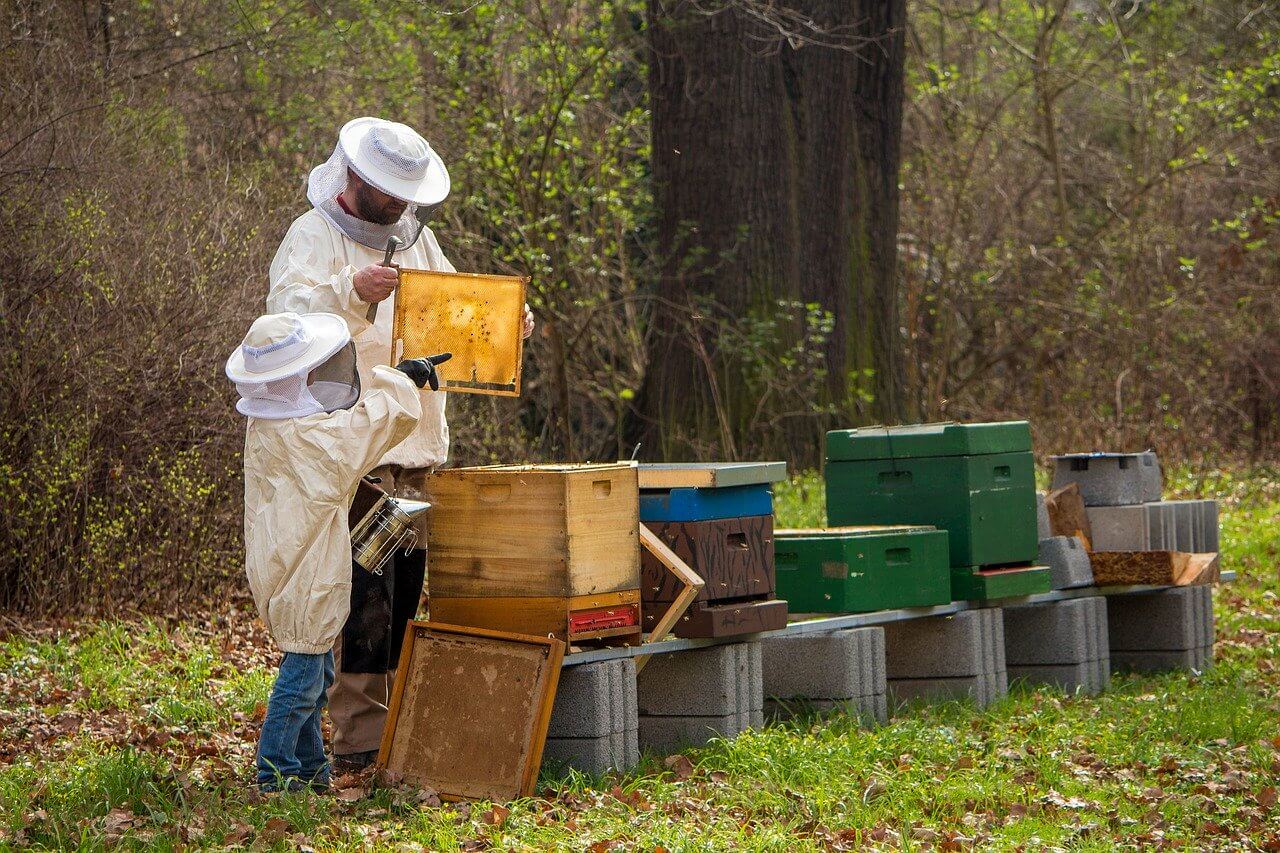
It’s important to select just the right location for your beehive right from the start.
Environmental factors such as sunlight, wind, temperature and humidity can dramatically affect your bees’ behavior, health and productivity.
Moving a beehive is not a simple matter, so it’s wise to get it right the first time. For more on how to transfer bees, see our article.
Begin by looking for a location that is neither too far nor too close to your own living area. You want to be able to check on your bees frequently and easily, but you don’t want to have to swat them away when you’re working or relaxing outdoors around your house.
Keep your neighbors and passers-by in mind when you choose your location. You don’t want your hives to be seen as a public nuisance, and they should be protected from theft, vandalism and potential lawsuits.
Hives should be near your chosen honey processing area. Remember that the hives can weigh a hundred pounds when they are full of honey. You don’t want to have to haul them far to take care of your honey processing.
The ideal location for your beehives should be level, sheltered and equipped with good drainage and gentle sun exposure. The right amount of sun will help keep your hives warm in winter. Too much will kill your bees.
An area that receives morning sun during the honey producing season is best. Afternoon shade provided by deciduous trees (which will drop their leaves during the cold months of winter) will help keep your hives the right temperature year round.
Having the hive entrance face east or southeast is desirable as the rays of the rising sun will alert the bees that the day is beginning.
Beekeeping For Beginners – Hive Set Up
If your property has abundant flowering trees, cultivated flowers, wildflowers and even flowering weeds, your bees will appreciate being near them, and they can make good use of all flowers.
Bee favorites include:
- Fruit Trees
- Basswood
- Goldenrod
- Dandelion
- Thistles
- Alfalfa
- Clover
- Aster
- Sage
Plants that humans deem worthless can be converted into valuable honey by industrious honeybees.
In addition to plenty of flowers, bees need plenty of water. Even if you have a natural source of water on your property, such as a stream or pond, you should also provide fresh water near the hive.
Be sure to equip your water source with stones upon which the bees can alight so that they don’t drown.
Choose The Best Bees For Your Goals And Location
Once you’ve done your research and made good local connections, you’re ready to start thinking about selecting your bees.
Genetics of bees is a very important consideration when populating your hives. Bees’ behavior, honey production and tendency to swarm (or not) are all affected by the genetics of the queen and the drones.
The weather also affects all of these considerations. If you live in an area that has very cold winters, you will select a different type of bees than those that thrive in an area that has warm winters.
You must also keep in mind that a type of bee that can do well in both hot and cold climates may behave entirely differently in one climate than in another, so you must gather advice on keeping bees in your area from local beekeepers.
For example, you’ll need to find out what type of hives work best in your climate, as well as what type of bees adapt best. Hive management and colony management differ from type to type and species to species.
Local Bees Adjust More Quickly
Even though you can buy bees online, you are better off purchasing a nucleus colony (here is our article on moving bees from nuc to hive) from a local source.
That way, they will already be acclimated to your area. Additionally, shipping bees from place to place can be very stressful to them.
Beekeeping How To Start Beekeeping
Another option for acquiring bees is to locate or lure a swarm. There are swarm watchers (which you can find through your local bee club) who will let you know when a swarm is nearby.
Alternately, you can lure a swarm to a vacant hive with lemongrass oil or similar attractants. For more on what to do with a new swarm of bees, see our article. And here is how to calm your bees without using a smoker.
Frequently Asked Questions
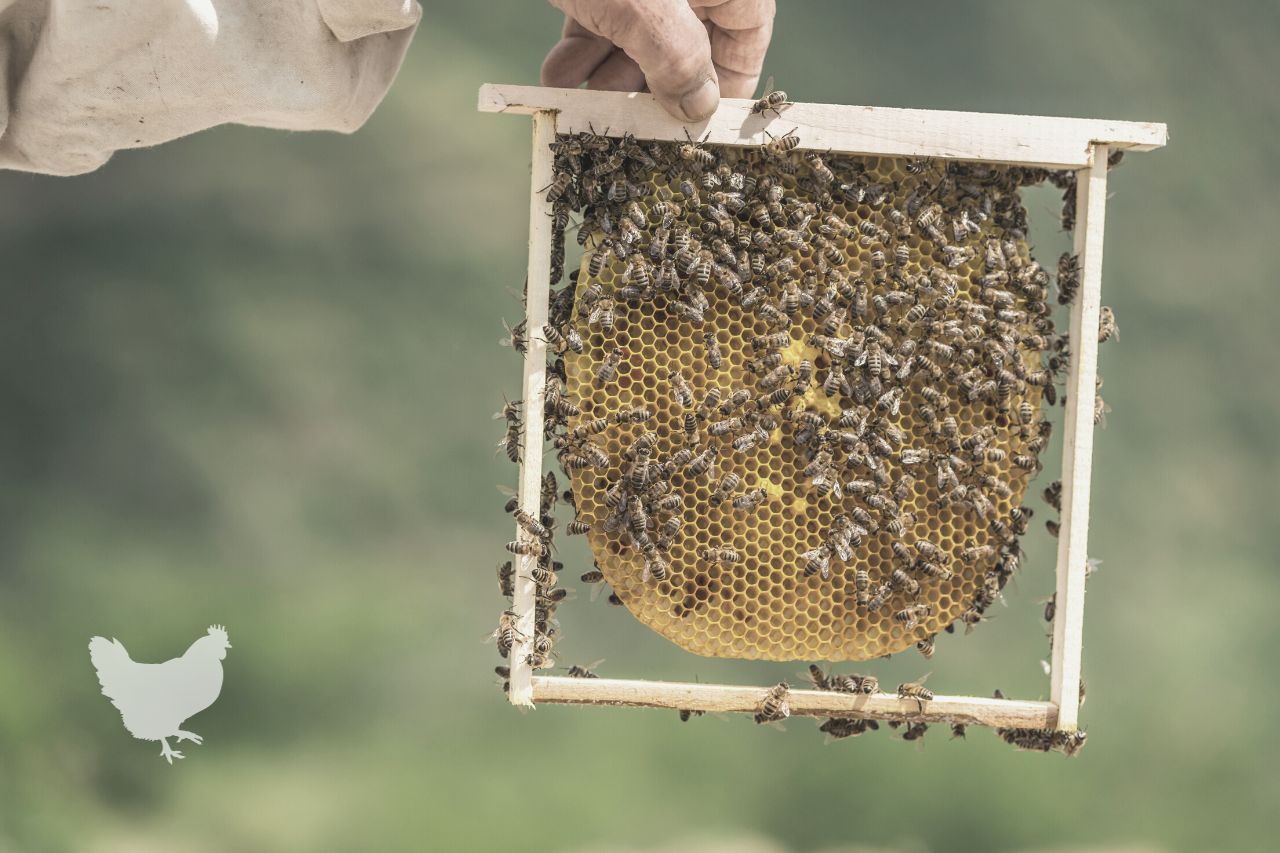
Q: What should you do first if you want to keep bees?
A: Begin by learning as much as you can about bees. Read books, visit beekeeping websites and join beekeeping groups online and in person so that you can become an expert in facts before you ever attempt to care for bees. Once you have some knowledge under your belt, you can begin gathering the equipment you’ll need to take good care of bees.
Q: What kind of equipment do you need for beekeeping?
A: The basics of beekeeping include:
- A bee veil and/or jacket
- Leather gloves
- A frame lifter
- A bee brush
- Hive tools
- A smoker
- Hive(s)
It’s best to start out with brand new equipment, but if this presents an overwhelming financial challenge, you can certainly choose to use pre-owned equipment. Just be sure to clean and sterilize it thoroughly to prevent spreading illness and pestilence to your colony.
Q: Why is having a smoker beneficial for a beekeeper?
A: Correct use of a smoker can help keep beekeeping safe. The presence of the cool smoke created by a smoker calms the bees and makes it easier for you to take care of beekeeping tasks without being stung.
Q: Once I’ve gotten all my equipment, should I get my bees?
A: Set up your hive before you acquire bees. Choose your location carefully to be sure it gets the right amount of sun and shade, is correctly protected against the elements and has good access to fresh water and sources of pollen. Good location will help you avoid the hassle of moving an inhabited bee hive later on.
Q: What’s the best way to get bees to start a new hive?
A: You can order bees during the winter from an apiary, or you may be able to get packages of bees from a local bee shop or beekeeping club. If you are having trouble finding sources of bees in your area, get in touch with your state university or extension office. They are sure to have good referrals.
Q: How do I introduce the bees to their new hive?
A: Make sure your queen bee is strong and healthy and get her well situated (in her queen cage) in the new hive. Once she is safely in place, you can place the open bee package on the hive so that the remaining bees can make their way in. It’s a good idea to do this at dusk so they will not have the urge to immediately fly away. When the worker bees become aware that the queen is in residence, they will check on her and then they will settle in. For her own safety, wait several days before releasing the queen from the cage.
Q: Should you do anything special to feed new bees?
A: It’s a good idea to have a solution of sugar water available to the bees so that they will not need to travel far and wide to find food at first. This will help them settle in. This is especially true if you get them early in the springtime and there’s not a lot of natural nectar and pollen to be had. Keep an eye on their eating habits. When they stop eating the sugar solution, you can stop offering it.
Q: How often do you need to check on a new hive?
A: During the active season, take a peek at your bees once every week or two to be sure that new broods are being created and your colony is happy. In the wintertime, you may want to check a couple of times a week to be sure your bees are getting enough to eat and are staying warm and dry.
Study Up And Give Your Bees Plenty Of Time To Settle In
The best time to start a beehive is in the spring. An early springtime startup gives the bees plenty of time to become established and get some honey stored up for winter.
In the first year, there probably won’t be enough honey for a harvest, but you can surely count on an excess in the second year.
Even though spring is the best time to start your hive, remember that the best time to start beekeeping (in the form of learning) is months or even years before you set up your hive and acquire your bees.
Beekeeping is a costly endeavor, even in the best circumstances. Remember to make the most of the experience by being well prepared.
The best way to enjoy success with beekeeping is to learn as much as you can and then continue learning.
You should start off with the attitude of becoming a caretaker. If you approach beekeeping as a moneymaking project, you will surely fail.
I love honey. But I didn’t know that beekeeping is so hard and requires a lot of effort.